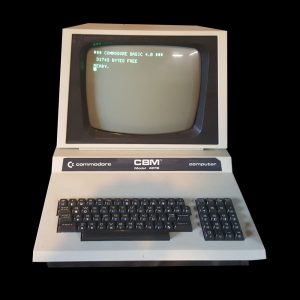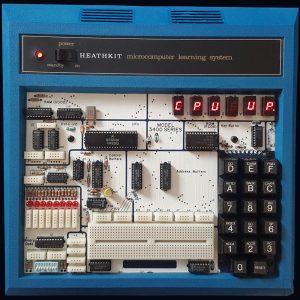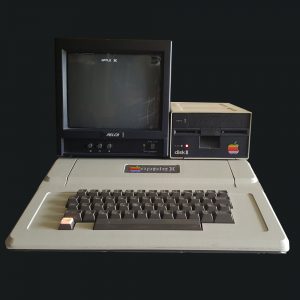
Welcome to Vintage Vibe
Here is my collection of vintage computers and electronics.
I'm a bit of a hobbyist and have done a variety of different projects and restorations.
I will be adding new posts from time to time as I complete each project. Here are some of my recent posts below ... enjoy.
About me..
PET 4016
Posted by musovern on Apr 4th, 2018 in Commodore, Vintage Computers | 0 comments
The PET 4032 was released three years after the original PET 2001. Although it has the same CPU running at the same speed, improved circuitry allows the 4032 to run substantially faster. Other improvements include more memory and a better keyboard.
4032 refers to 40 character display, with 32K RAM memory.
The 4032 has four ports to the outside world. An eight-bit parallel port, a port for a cassette recorder, a port that brings out the system bus, and an IEEE-488 port. Still in use today, the IEEE-488 bus is relatively complex, allowing up to 15 devices on the bus, but is mostly used for laboratory and scientific instruments.
Read More...Heathkit ET-3400
Posted by musovern on Apr 4th, 2018 in Heathkit, Single Board Computers | 0 comments
Heathkit ET-3400
The Heathkit/Zenith Microcomputer Learning System model ET-3400 was a very popular item designed to teach principles of computers and programming at Universities in the 1970s., and to educate the students of internal computer hardware and software components by self-assembly and programming the machine in pure Hexadecimal language.
It was delivered in assembled or kit form. It also featured a prototype area and could be used as a design aid for developing special interface circuitry with common 6820 parallel interface or 6850 asynchronous chips.
Several software in ROM were also available, among them an Assembler and a Tiny BASIC.
Read More...Apple II
Posted by musovern on Apr 3rd, 2018 in Apple, Vintage Computers | 0 comments
Apple II was the successor to the Apple 1, on which it was largely based. It was the very first commercial success of the Apple Computer Company. Because Steve Wozniak wanted to demonstrate his Breakout game with the new Apple II, he decided to add color, sound and minimum paddle support to the Apple 1 heir.
Apple II came with 4 KB RAM, but it was possible to add 4 KB or 16 KB RAM chips. Thus, the system could have memory in the following sizes: 4K, 8K, 12K,16K, 20K, 24K, 32K, 36K, or a full 48K. This was one of the strong points of the Apple II: from the beginning, it was designed with expansion in mind. The 8 expansion slots were further proof of that – users could expand their system easily, just by plugging cards into the slots.
Read More...

